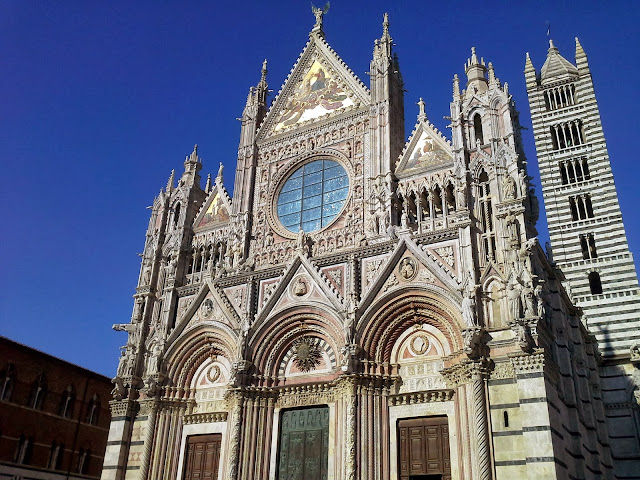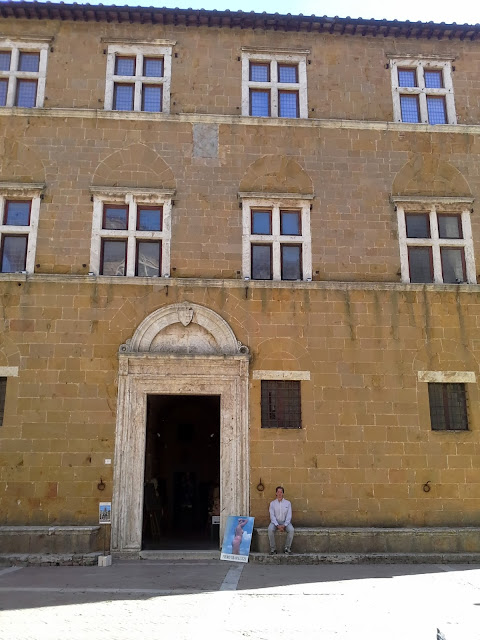The Metropolitan Cathedral of Santa Maria Assunta is the main place of Catholic worship in Siena , Tuscany.
The cathedral itself was originally designed and completed between 1215 and 1263 on the site of an earlier structure. It has the form of a Latin cross with a slightly projecting transept, a dome and a bell tower.
The dome rises from a hexagonal base with supporting columns. The lantern atop the dome was added by Gian Lorenzo Bernini. The nave is separated from the two aisles by semicircular arches. The exterior and interior are constructed of white and greenish-black marble in alternating stripes, with addition of red marble on the façade.
 The façade of Siena Cathedral is one of the most fascinating in all of Italy and certainly one of the most impressive features in Siena. Each of the cardinal points (west, east, north, and south) has their own distinct work; by far the most impressive of these is the west façade. Acting as the main entryway to the Duomo proper, it boasts three portals; the central one is capped by a bronze-work sun.
The façade of Siena Cathedral is one of the most fascinating in all of Italy and certainly one of the most impressive features in Siena. Each of the cardinal points (west, east, north, and south) has their own distinct work; by far the most impressive of these is the west façade. Acting as the main entryway to the Duomo proper, it boasts three portals; the central one is capped by a bronze-work sun.
In the interior the pictorial effect of the black and white marble stripes on the walls and columns strikes the eye.
Black and white are the colours of the civic coat of arms of Siena. The capitals of the columns in the west bays of the nave are sculpted with allegorical busts and animals. The horizontal moulding around the nave and the presbytery contains 172 plaster busts of popes dating from the 15th and 16th centuries starting with St. Peter and ending with Lucius III.
The spandrels of the round arches below this cornice exhibit the busts of 36 emperors. The vaulted roof is decorated in blue with golden stars, replacing frescoes on the ceiling, while the formerets (half ribs) and the tiercerons (secondary ribs) are adorned with richly elaborated motifs.
The stained-glass round window in the choir was made in 1288 to the designs of
Duccio.
It is one of the earliest remaining examples of Italian stained glass.
The inlaid marble mosaic floor is one of the most ornate of its kind in Italy, covering the whole floor of the cathedral. This undertaking went on from the 14th to the 16th centuries, and about forty artists made their contribution.
Adjoining the cathedral is the Piccolomini Library, housing precious illuminated choir books and frescoes painted by the Umbrian Bernardino di Betto, called
Pinturicchio, probably based on designs by
Raphael.
The ceiling is covered with painted panels of mythological subjects. They were executed between 1502 and 1503 by
Pinturicchio and his assistants. The frescoes tell the story of the life of Siena's favourite son, cardinal Enea Silvio Piccolomini, who eventually became Pope
Pius II. He was the uncle of cardinal Francesco Todeschini Piccolomini (then archbishop of Siena and the future pope
Pius III), who commissioned this library in 1492 as a repository of the books and the manuscript collection of his uncle.










































